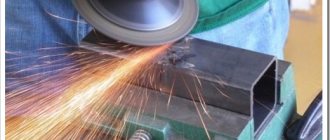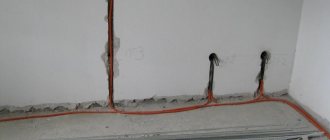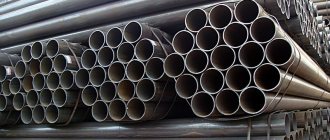Even minor repairs, not to mention professional construction, cannot be completed without the use of a hammer drill. It is with its help that you can make a hole in a stone wall or a recess in a concrete structure. Therefore, both the home craftsman and the builder should know how to work with a hammer drill.
Also, such a tool allows you to quickly and easily drill the required number of holes in ceramic tiles, brick, wood, and metal. And additional attachments will allow, for example, to drill through a ceiling, compact material, drive a rod, and even tighten a screw.
Depending on the application and the availability of additional components, the hammer drill can be used in a wide variety of construction operations. But how to do this correctly to prevent tool failure?
For what materials can a hammer drill be used:
- Is it possible to tighten screws and self-tapping screws with a hammer drill ? Many professional builders prefer, whenever possible, to use power tools that can perform the functions of several types of equipment. A hammer drill is one of them. To quickly and conveniently screw in self-tapping screws, special attachments are used. Among them there are models with a limiter, which guarantee control of the “recession” of fasteners.
- Is it possible to mix the solution with a hammer drill ? It is possible, and quite effective, with low viscosity of the solution (for high-viscosity formulations, it is recommended to use a stirrer attachment and work at minimum speed). Additional arguments in favor of this use may be that the speed of rotation of the tool shaft can be easily changed. In addition, according to the principle of its operation, a hammer drill differs little from a construction mixer.
3. Is it possible to drill wood with a hammer drill? Using a hammer drill you can get fairly high-quality holes. To do this, you need to use a power tool in drill mode and use special drills. Depending on the material and diameter of the hole, the drilling speed is determined.
4. Is it possible to drill tiles with a hammer drill? The main problem when working with ceramics is that it can break if handled incorrectly. That is why, when using a hammer drill, you must first turn off the impact mode, and it is better to start drilling at low speeds with a gradual increase in speed.
5. Is it possible to drill metal with a hammer drill? If you use a special drill, it is possible to create holes with this tool in almost any material. In most cases, they have a cylindrical shank and a spiral design. The material for their manufacture is high-strength steel (often based on cobalt alloys). Drills equipped with carbide plates on the cutting part will be more universal in use.
It will be interesting: “What is the difference between an impact drill and a hammer drill: 7 main criteria”
What is a hammer drill used for?
The tool is designed to perform percussion work in hard materials :
- stone;
- metal;
- brick;
- reinforced concrete.
A hammer drill is a universal tool.
It is used to drill holes of different diameters for dowels, sockets for sockets in concrete, chip tiles, break through floors, as well as concrete and brick walls, and make openings for laying communications.
The versatility of the hammer drill is explained by the ability to work in various modes :
- drilling;
- rotation with and without impact;
- hit without rotation.
Professional models can work like a jackhammer.
Rules for safe use of the tool
To ensure safe use of the hammer drill, it is recommended to use personal protective equipment. It is important to protect your eyes, face and hands.
During operation, there is a risk of the drill heating to elevated temperatures. This is due to its strong friction. Therefore, before removing this element, you need to let it cool or carry out the procedure with gloves.
Important! To understand how a hammer drill works, you need to study the instructions in advance. It includes many useful tips on the operation of the device.
In what cases can the lights flash?
If the hammer drill design has light signaling lamps, their blinking may indicate a breakdown or malfunction of a certain component or mechanism. If the red light on the instrument is flashing, it is recommended that you read the instructions for use.
Additional tool features
Some rotary hammer models are equipped with additional modes. These include, in particular, turning the bit. This mode is required for effective chiselling. In this position, the bit rotates by a certain degree. This happens with every hit.
Impact drilling
To use this mode, the switch must be set to the “hammer drill” position. This mode helps to make holes in concrete and brick. The device performs translational and rotational movements.
Chiseling
Many people are interested in how to hammer concrete with a hammer drill. To do this, the switch needs to be placed near o. In this mode, the tool will not rotate. With its help, you can crush building structures, punch grooves, and carry out excavation work.
When chiseling hard surfaces, it is necessary to hold the device well. In this case, it is recommended to use special tools - peaks, spatulas, chisels, chisels.
Preparing the hammer drill for work
Before drilling with a hammer drill, you need to prepare for work, study the instruction manual and strictly follow the requirements described in it. If the rules are violated, the instrument may break and it is not always possible to repair it. The required load must not be exceeded. Long and continuous operation leads to overheating of the gearbox and drive elements, which fail. Parts are lubricated only with high-quality compounds . It is prohibited to perform work that is not provided for in the instructions. Before drilling into a wall with a hammer drill, it is inspected.
Check integrity:
- housings;
- cartridge;
- electrical insulating layer of the connection cable.
It is necessary to make sure that there are no chips or cracks on the crowns, drills and drills. The cutting edges must be sharpened.
Before drilling a hole with a hammer drill, perform a trial run and operate in idle mode . Check whether the buttons and toggle switches responsible for the speed and direction of rotation of the cartridge work.
On an unfamiliar object, make sure that the wiring is of sufficient size to power a powerful tool. Otherwise, the cable will overheat, which will lead to melting of the insulation and short circuit.
Characteristics
The Makita company appeared in the Land of the Rising Sun; in professional circles it is considered one of the best manufacturers of power tools. Makita dates back to the 15th year of the last century, when it began producing electric motors. The first popular professional tool that made the company famous was the electric planer. Today, Makita's product range includes about four hundred items; screwdrivers and hammer drills are areas that the corporation has been particularly actively developing in recent years. Many innovative innovations have been introduced into these devices, for example, autonomous power supplies have been improved, which have become even more compact and energy-intensive.
Many of the corporation's production facilities have been moved outside the country to Asian countries, where labor costs much less. This allows Makita to be more competitive and invest free funds in new models and developments. Makita's calling card and source of pride is its long-term cooperation with the aerospace corporation NASA (USA).
Advantages
Features and advantages of power tools from Makita:
- compact dimensions;
- good power;
- little weight;
- presence of double insulation;
- high performance;
- the ability to quickly change nodes;
- versatility and convenient functionality.
Flaws
Any tool or device sooner or later becomes unusable.
The most common breakdowns in Makita products:
- the appearance of cracks on the unit barrel;
- damage to the striker;
- abrasion of couplings and gears;
- bearing failure;
- winding burnout;
- leakage of lubricant.
Features of drilling different surfaces
There are as many varieties of materials as there are drilling features. High-quality results can only be expected if they are strictly followed.
Metal
This material is difficult to handle mechanically. You need to work with metal with very strong, high-quality drills , otherwise the workpiece can be damaged. It is extremely difficult to drill into thin metal sheets. They move all the time. A special device is used to fix them.
For metal use especially strong drills
Tree
Wood is easy to drill and chisel, but when working with it, certain requirements must be observed. Logs must be secured. When working with small wood, use simple sandpaper. Wrap the blanks in felt. It will help remove burrs that appear after drilling. When working with wood, do not put too much pressure on the tool. There are several types of wood flooring, each treated differently. For example, when drilling plywood, to prevent it from splitting, use an attachment resembling a potato peeler. To make one, a steel tube . They use it to make holes in the plywood.
Wood of different species varies significantly in hardness . As a result, the load on the equipment when working with pine is less than with oak. It must be borne in mind that the resulting chips clog the drill, which can cause it to overheat.
The store sells a large number of different products. Don't buy the cheapest ones. They are not reliable. They can be purchased to perform one-time work. It is better to opt for products made from metal alloys . They are more durable and wear-resistant when working with a wooden base.
Concrete
A drill with a Pobedit tip is best suited for working with this material . First, mark the drilling point. A small recess is made in it with an ordinary drill. A drill of the required size is installed in the hammer drill chuck and a hole is drilled with it. During the process, the nozzle is dipped into water from time to time, so it penetrates the concrete better. If you have to hammer reinforced concrete slabs, there is a chance that the hammer drill will bump into the reinforcement. You can drill slightly to the side or diagonally. If it is necessary to make a hole at a specific point, use a special nozzle and a regular drill. Pobedit nozzles are not intended for punching reinforcement.
Ceramic tile
Tiles are often used to decorate bathroom walls. This is a very fragile material. It is impossible to make holes in it with ordinary drills. You need special ones with carbide tips . Soldering reduces the load on the surface, making drilling into ceramic coating much easier.
The best tools for drilling holes in ceramics are those with a diamond coating . Such products are expensive, there is no point in buying them for a one-time job. They are usually used by craftsmen whose work involves constant drilling of ceramic tiles.
If you have to drill glued tiles, take glass drills . Some people recommend using a mounting grid. It is placed between the tile and the drill, then the mesh will not crack. After the drill passes the tile, a drill is inserted into the chuck, which performs impact movements.
To drill tiles, use special drills with carbide tips.
Comparison with other models
Domestic and Makita have the highest sales levels of power tools in Russia. Makita is a renowned company that produces professional power tools that can be used daily for 8–10 hours. Such requirements require the presence of a large functional resource. Interskol focuses more on the production of household tools; the resource required is less than that of Japanese equipment, but Interskol products also cost much less. For domestic needs, when a hammer drill or hammer is needed once every six months, there is no better equipment to be found.
In terms of breadth of assortment, the Russian company is in no way inferior to the eminent corporation from the Land of the Rising Sun. The advantage of Japanese products is that each model is carefully thought out and worked out; working with such a tool is convenient and pleasant. In terms of quality, Makita is the undisputed leader.
Disadvantages of Interskol:
- sometimes there is a backlash in the equipment, which affects the accuracy of the work;
- the instrument is noisier;
- hammer drills are larger in size and weigh more.
Bosch and Makita are two of the largest players in the global power tools market.
Bosch also specializes in the following areas:
- production of auto components;
- production of turbines and household appliances.
Makita is “tailored” only for the production of power tools; in terms of the breadth of models in this segment, the company is not inferior to Bosch, and in some ways even surpasses the German corporation. For example, Makita produces electric hammers - more than twenty products - while Bosch makes only five. The Green Ruler from Bosch is a tool designed for household needs. The Blue Series is a tool for professionals. It only makes sense to compare the “blue” Bosch with the Makita. Most often, Bosch surpasses Makita in terms of innovation; the scientific and technical base of the German giant is richer. The SDS-Plus chuck (a device for fastening drill bits in rotary hammers) was invented and introduced by a German company.
Safety precautions at work
To protect yourself from injury and the tool from damage, you must follow safety rules. Work with a rotary hammer in overalls, transparent glasses, gloves, closed shoes, earplugs or headphones , as the tool is dusty, noisy, and particles of solid material fly away when chiseling. A working rotary hammer will not slow down or make any extraneous noise.
If it is necessary to make a long hole, first drill with a short drill and gradually move on to a long one. If it is not given rest, it will overheat. The technical manual indicates recommended operating times under load and at idle.
You should not touch the nozzle with your bare hands immediately after it has stopped, as you may get burned. timely cooling , otherwise it will lose its hardness and elasticity. To cool the holes and nozzles, a special liquid system is used, the operation of which is based on the supply of cooled water or emulsion to the desired location using tubes or a water coupling.
The tail section of all drills requires periodic lubrication. It is recommended to carry out this procedure before installing the nozzle. Although lubrication is allowed every 150-200 operations . The instructions indicate the frequency of maintenance that must be observed.
Recommendations
When performing this work, care must be taken to ensure that the holes do not warp. You can avoid turning the holes by firmly resting the tool on the surface to be processed. If, nevertheless, the part is jammed, you must immediately turn off the tool, and then turn it on again in reverse mode. When there is no such mode, you will have to remove the hole manually. When drilling, it is unacceptable to clean the working channel with your hands - this could result in injury.
Many people are also interested in how to protect the room where renovations are being carried out from dust when drilling the ceiling. The classic method is to string a cardboard or plastic cup onto the working part of the tool. For the same purpose, you can use a special package. Sometimes they also take flat nylon jars without a lid.
To reduce the spread of dust that bypasses these devices, turn on an industrial vacuum cleaner.
To learn how to use a hammer drill correctly, watch the following video.
What to do if a drill or auger gets stuck in the wall
Even knowing how to drill correctly with a hammer drill, you may encounter a problem when the drill gets stuck in the wall. Most often, the cause is the nozzle getting caught between the stone and the iron reinforcement . This happens if the drill penetrates very deeply into the wall. There is no need to press the trigger further and loosen the tool. The nozzle can break, and getting it out quickly and easily is not always possible. The worst thing is that the hammer drill will burn out. If the drill is stuck in the wall, the cartridge is freed from it. A thin drill is inserted into the tool and a piece of concrete is carefully drilled out near the stuck nozzle. There is no need to get there. Gradually, slowly, you will be able to hollow out pieces of concrete and pebbles around the stuck nozzle. After this, the drill can be removed from the wall.
To reduce dust during work, you can use tape and a bag.
Gearbox
The element is necessary in order to transmit a torque impulse to the cartridge from the electric motor.
Peak load on the gearbox occurs precisely during operation at high speeds. The temperature rises significantly, which affects the effectiveness of the lubricant. As a result, the performance of the lubricant gradually decreases and must be renewed.
To do this, the housing should be disassembled, then evenly apply a layer of oil.
If we talk about which lubricant is preferable to use specifically for the hammer drill gearbox, then the optimal choice would be a proprietary composition. That is, a lubricant designed for a specific brand of power tools. Most manufacturers offer appropriate consumables to service their electrical appliances.
How to drill without dust
To prevent dust when drilling the wall, take a plastic bag and tape , preferably masking tape. In the right places on the wall, mark the holes to be made. Under the mark on the wall, glue an open plastic bag with tape so that the dust falls inside. When you increase the speed, some of the dust will be blown away by the engine fan, so you need to drill carefully at low speeds, then the waste will pour out exactly into the bag. It is important to stick the tape to the wall very tightly. If the fit is not tight, dust will spill between it and the wall, and the wallpaper will become dirty.
How to make a groove in concrete correctly: with a hammer drill, a grinder with your own hands
Grooving concrete is the making of small-width grooves in the thickness of the material into which various communications are laid (most often wires and elements of the electrical network). Despite the apparent simplicity of the process, it is not always possible to make grooves correctly and safely.
The laying of communications is carried out in accordance with established rules and regulations, requires maintaining certain distances, using suitable tools, correct marking of the wall, removing dust, careful installation, etc. The most important thing that you need to pay attention to first is studying the current SNiP standards and choosing a tool.
Before you start ditching, you must study all the nuances and subtleties, rules and regulations specified in special documents.
Basic parameters to consider when choosing drills
Soldering determines the speed of hole punching, drill wear resistance, and drilling quality. If you plan to work with masonry or marble tiles, it is better not to use a concrete drill. For heavy and reinforced concrete, a diamond tip attachment is suitable. If you have no experience in choosing products, you should familiarize yourself with simple recommendations.
An essential criterion is the choice of drill according to the chuck . Depending on its type, a drill is selected; another type will not work. Then select the desired size. You need to choose a drill of such a size that it is slightly smaller than the required hole, because when the drill enters the surface, it crushes the concrete around the circumference. When purchasing, you need to pay attention to other equally important parameters.
Drill diameter
To work with different materials, drills of the appropriate diameter . Due to the narrow nozzle, it is difficult to enlarge the hole smaller than the required size. The work will be performed poorly, and it will not be possible to securely install the product.
Length of the product
This is an important indicator. Often you have to work with thick surfaces. If necessary, drill holes of about 0.5 m; the equipment must be strong and durable. When choosing a specific nozzle, you need to determine the length of the product .
Hole type
When you need to drill a workpiece to a certain depth, and not right through, use products with a conical tip . This is necessary when making holes for furniture hinges. It is important here not to spoil the material, because it is thin.
Before purchasing, you need to evaluate the appearance of the drill . There should be no unevenness or cracks on the surface. The presence of such defects will negatively affect the final result. The holes for the hinges are drilled using a Forstner drill . It has a special limiter, which is adjusted depending on the thickness of the material being processed.
Drills and drill bits for rotary hammers
Color
In addition to these indicators, the color of the drill is of great importance:
- Gray . The cheapest and most durable products.
- Black . Much more durable than previous ones.
- Yellow . They have high hardness.
- Golden . Very strong.
No less important indicators are wear resistance and performance. A good drill or high quality drill will be enough to make a large number of holes. When choosing equipment for working with concrete or other materials, you should pay attention to the shank of the hammer drill . This recommendation is due to the fact that the drill shank and tool chuck design do not always match each other.
Is it possible to use Litol instead of drill lubricant?
If we start from a situation where there is no lubricant at all, then you can use almost any thick composition, even technical petroleum jelly. However, this is a one-time measure; it is necessary to find the correct lubricant as quickly as possible, remove the “Litol” and change the composition on the drill shank.
Contraindications for Litol type lubricant, based on performance characteristics:
- accumulates external dust, especially abrasive dust;
- does not contain wear-resistant additives;
- poor performance under welding loads;
- the critical loads withstood are too small, only 63 N;
- the same applies to the tensile strength when heated: only 200 Pa.
Conclusion: Based on this, it is impossible to recommend Litol and similar lubricants for permanent use in rotary hammer drills.











